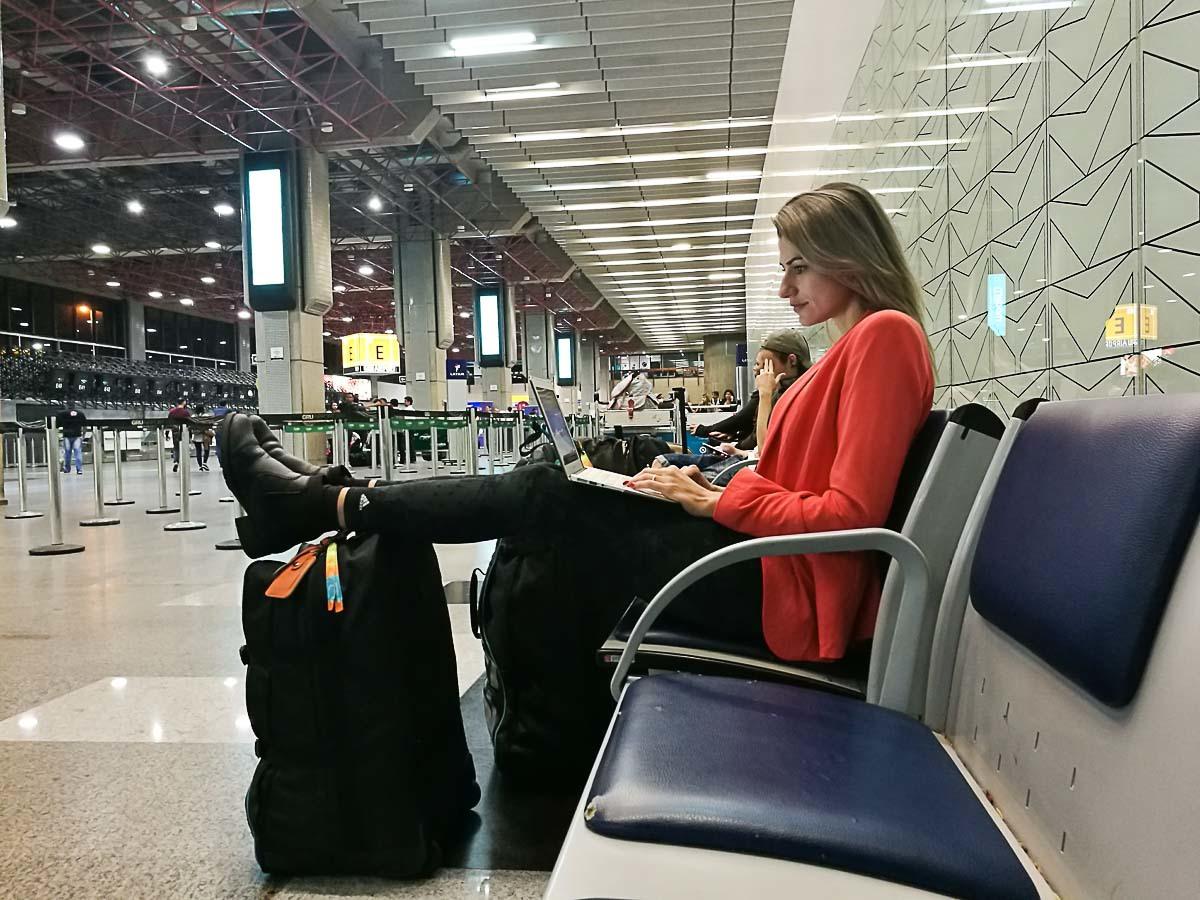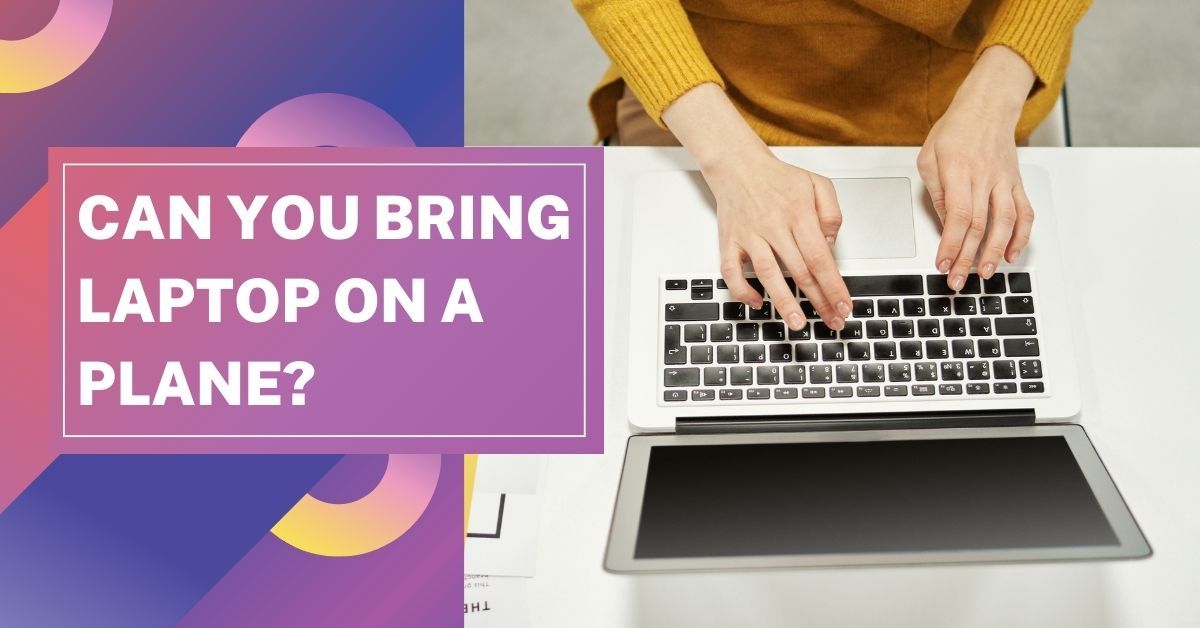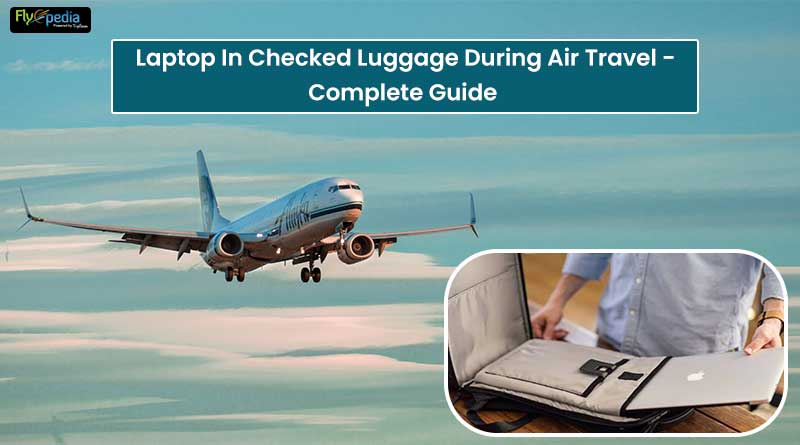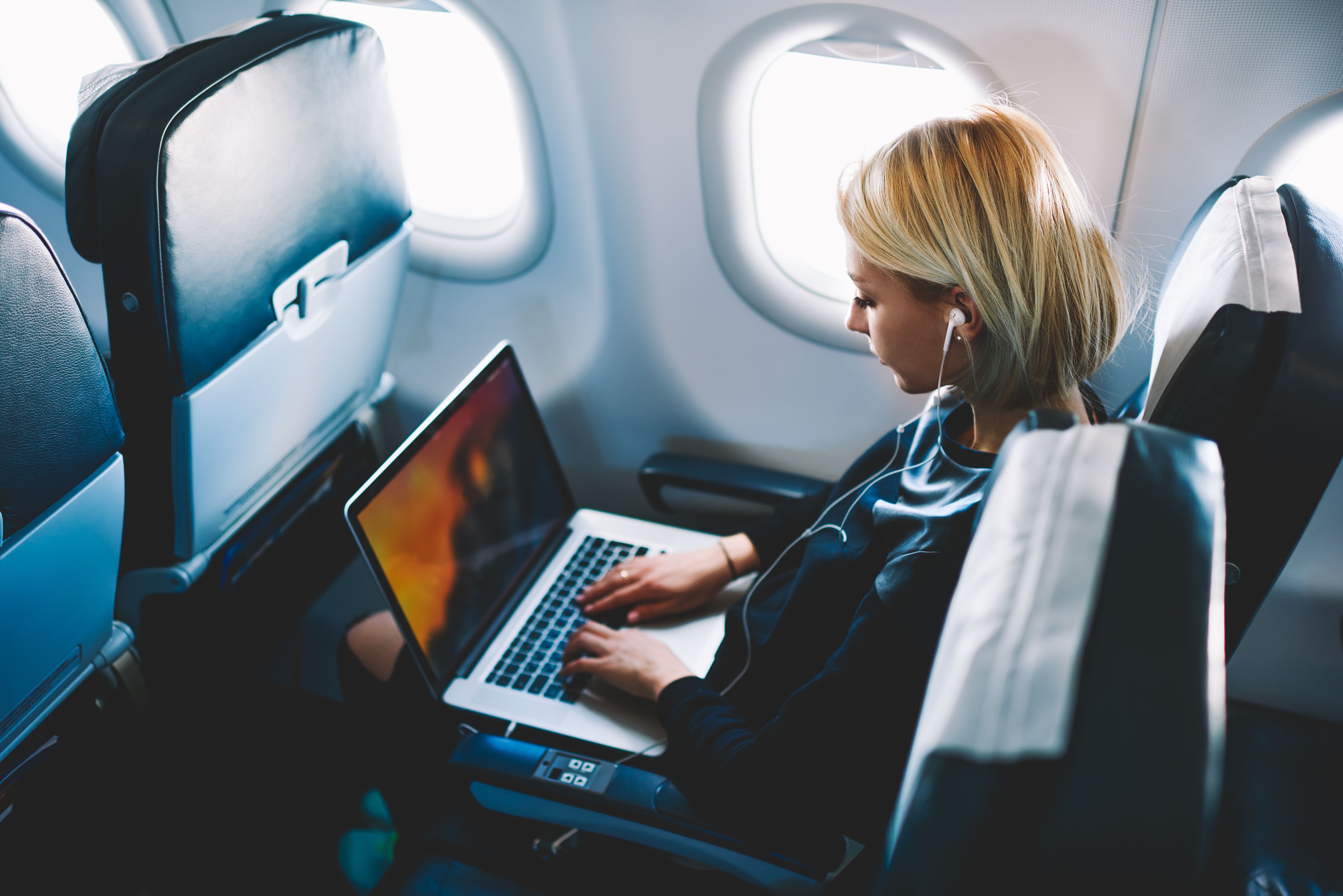
Introduction
Overview of carrying a laptop on a plane
Carrying a laptop on a plane has become increasingly common in today’s digital age. Many travelers rely on their laptops for work or leisure to stay connected and productive during their journey. However, it is crucial to understand and adhere to the airline regulations regarding the transportation of laptops to ensure a smooth and hassle-free travel experience.
Importance of following airline regulations
Following airline regulations is paramount when carrying a laptop on a plane. These regulations are implemented to ensure all passengers’ safety and security. Failing to comply with these regulations can result in delays and inconveniences and may lead to the laptop’s confiscation or even legal consequences. It is essential to familiarize oneself with the specific regulations of the airline being used to avoid any complications.
By adhering to the airline’s rules, passengers can help maintain a safe and comfortable environment for everyone on board. This includes complying with size and weight restrictions, ensuring proper documentation, and following security procedures such as removing laptops from bags during screening. Knowing and respecting these regulations will contribute to a more efficient and enjoyable travel experience.
It is also worth noting that airlines may have different policies and requirements, so it is wise for travelers to check the specific guidelines before heading to the airport. This will prevent any surprises or misunderstandings and enable passengers to plan accordingly.
In conclusion, carrying a laptop on a plane is a common practice, but it is essential to be aware of and follow the airline regulations surrounding its transportation. By doing so, passengers contribute to a safer and smoother travel experience for themselves and others on board.

Check Airline Regulations
Researching airline policies regarding laptops
Passengers should thoroughly research and familiarize themselves with the specific regulations of the airline they are flying with. This includes understanding size and weight restrictions, documentation requirements, and laptop security procedures. Each airline may have different policies, so checking their guidelines before heading to the airport is important.
Carry-on vs. checked baggage options.
Passengers should consider whether to carry their laptop as a carry-on item or check it in as a part of their baggage. While most airlines allow laptops to be carried on board, size limitations or additional fees may exist. Checking the laptop as baggage ensures its safety but carries the risk of damage. It is essential to weigh the pros and cons and decide accordingly.

Choose a Laptop Bag
Selecting a TSA-approved laptop bag
It is crucial for passengers to choose a laptop bag that is TSA-approved. These bags are designed to allow security personnel to easily screen the laptop without removing it from the bag. This ensures a smoother and more efficient security process.
Considerations for size, compartments, and durability
When selecting a laptop bag, passengers should consider the size and compartments it offers. The bag should accommodate the laptop securely and provide extra space for other essentials. Additionally, durability is important to protect the laptop from potential travel damage.
Here is a comparison table for the two types of laptop bags:
| TSA-Approved Laptop Bag | Regular Laptop Bag |
|---|---|
| Allows for easy laptop screening at security checkpoints | Requires laptop removal for separate screening |
| Often comes with additional compartments and pockets for organization | Usually has limited compartments and pockets |
| Designed for durability and protection of laptop | It does not typically have extra features |
| May have extra features such as a built-in USB port or charging cable | It may have extra features such as a built-in USB port or charging cable |
By choosing a TSA-approved laptop bag that meets the necessary size and compartment requirements, passengers can ensure a hassle-free travel experience while keeping their laptops safe and protected.

Organize and Protect Your Laptop
Properly securing and organizing cables and accessories.
It is important to properly secure and organize the cables and accessories that go along with your laptop. This can be done by using cable organizers, such as cable ties or cable clips, to prevent tangling and keep everything in place. A laptop bag with dedicated pockets or compartments for cables and accessories can help keep them organized and easily accessible.
Using laptop sleeves or cases for added protection
Consider using a laptop sleeve or case to provide extra protection for your laptop. These are designed to fit snugly around your laptop, providing a barrier against scratches, bumps, and other potential damage while in transit. Look for options that offer additional padding or reinforced corners for added protection.
By adequately securing and organizing cables and accessories and using a laptop sleeve or case for added protection, you can ensure that your laptop stays safe and protected during travel. Always choose a TSA-approved laptop bag that meets the necessary requirements to ensure a hassle-free security process.

Prepare Your Laptop for Security Check
Removing external attachments and disconnecting devices
To ensure a smooth and hassle-free security check, removing any external attachments from your laptop is important. This includes items such as USB drives, external hard drives, and any other peripheral devices. Disconnecting these devices helps streamline the security process and reduces the risk of damage during handling.
Ensuring a fully charged battery
Before the security check, ensure your laptop’s battery is fully charged. This is especially important if you anticipate a long wait or have a connecting flight. A fully charged battery will allow you to use your laptop if needed and help expedite the security check process, as some airports may require you to turn on your laptop to ensure its functionality.
By following these steps and adequately preparing your laptop for the security check, you can help avoid any unnecessary delays or complications during your travels. Always comply with TSA regulations and follow any specific instructions the airport staff provides.

Prepare Your Laptop for Security Check
Removing external attachments and disconnecting devices
To ensure a smooth and hassle-free security check, it is essential for travelers to remove any external attachments from their laptops. This includes items such as USB drives, external hard drives, and any other peripheral devices. Disconnecting these devices helps streamline the security process and reduces the risk of damage during handling.
Ensuring a fully charged battery
Before heading to the security check, ensuring the laptop’s battery is fully charged is recommended. This is especially important if a long wait or connecting flight is possible. A fully charged battery allows travelers to use their laptops if needed and can also help expedite the security check process. Some airports may require passengers to turn on their laptops to ensure functionality.
By following these steps and adequately preparing their laptops for the security check, travelers can avoid unnecessary delays or complications during their journey. It is important to always comply with Transportation Security Administration (TSA) regulations and follow any specific instructions airport staff provides.
Packing Your Laptop in Carry-On
Packaging tips for carrying a laptop in a carry-on bag
When packing a laptop in a carry-on bag, it is important to take extra precautions to ensure its safety during travel. Here are some helpful tips for packaging a laptop:
- Use a padded laptop sleeve or case to provide additional protection.
- Place the laptop in the center of the bag, away from the edges and other items.
- Avoid placing heavy or sharp objects on top of the laptop.
- Secure any loose cords or cables to prevent them from getting tangled or damaged.
- Ensure that the laptop is easily accessible for security checks without removing it from the bag entirely.
Avoiding damage during turbulence
During a flight, turbulence can occur unexpectedly, potentially causing damage to electronic devices, including laptops. To minimize the risk of damage during turbulence:
- Store the laptop securely under the seat in front of you or the overhead bin.
- Avoid storing the laptop in an overhead bin known to have a loose latch or a higher chance of opening during turbulence.
- If possible, place the laptop in a bag that provides added protection against impact and secure it with straps or other fasteners.
By following these packaging tips and taking precautions during turbulence, travelers can reduce the chances of damage to their laptops while traveling.

Security Checkpoint Procedures
Understanding the rules for screening laptops at airport security
When preparing for a security check at the airport, it is important for travelers to be aware of the specific rules and regulations regarding laptops. These rules are in place to ensure all passengers’ safety and maintain the efficiency of the security screening process. Here are some key points to keep in mind:
- Remove any external attachments from the laptop, such as USB or hard drives, as they may hinder the screening process.
- Ensure the laptop’s battery is fully charged, as some airports may require passengers to turn on their laptops to ensure functionality.
- Pack the laptop in a carry-on bag using a padded sleeve or case for added protection. Place it in the center of the bag, away from heavy or sharp objects.
- Secure any loose cords or cables to prevent damage or tangling.
- Keep the laptop easily accessible for security checks without removing it from the bag entirely.
- During turbulence, store the laptop securely under the seat or in an overhead bin that is known to be secure.
- Use a bag that provides extra protection against impact and secure the laptop with straps or fasteners.
By following these guidelines and being aware of the rules and regulations, travelers can ensure a smooth and efficient security check experience while keeping their laptops safe during travel.

In-Flight Use and Storage
Using and storing laptops during the flight
Passengers must follow specific guidelines for using and storing laptops during a flight. Knowing these rules is important to ensure a safe and convenient experience. Here are some key points:
- Put your laptop in airplane mode or disable wireless connections during the flight.
- Use your laptop only when the flight crew allows, typically during cruising altitude.
- Store your laptop securely in a carry-on bag or under the seat before you when not in use.
- Ensure the laptop is safely shut down and stored away during takeoff and landing.
- Follow the instructions of the flight crew regarding laptop usage and stowage.
Advantages of using a laptop bag with easy access compartments
Investing in a laptop bag with easy-access compartments can significantly enhance the convenience and security of traveling with a laptop. Some advantages of such a bag include:
| Advantages | Description |
|---|---|
| Quick and easy access | The bag allows for quick and easy access to the laptop, minimizing the need for extensive unpacking at security checkpoints or during the flight. |
| Efficient organization | Easy access compartments provide efficient organization of other accessories and personal items, making them easily accessible during the flight. |
| Added protection | The bag’s padded compartments offer additional protection to the laptop, buffering against impacts and potential damage during travel. |
| Convenient storage | The bag’s compartments can accommodate chargers, cords, and other accessories, keeping them neatly stored and preventing tangling or damage during transit. |
By following the rules for in-flight laptop usage and considering the advantages of a well-designed laptop bag, travelers can ensure a smooth and efficient travel experience while keeping their laptops safe and readily accessible.

In-Flight Use and Storage
Using and storing laptops during the flight
Passengers must adhere to specific guidelines for using and storing laptops during their flight. Knowing these rules is crucial to ensure a safe and convenient experience. Here are some key points:
- Passengers should put their laptops in airplane mode or disable wireless connections during the flight.
- Laptops should only be used when the flight crew permits, usually during cruising altitude.
- When not in use, laptops should be securely stored in a carry-on bag or under the seat in front of the passenger.
- Laptops should be safely shut down and stored away during takeoff and landing.
- Passengers must follow the flight crew’s instructions regarding laptop usage and storage.
Advantages of using a laptop bag with easy access compartments
Investing in a laptop bag with convenient access compartments can significantly enhance the convenience and security of traveling with a laptop. Some advantages of such a bag include:
| Advantages | Description |
|---|---|
| Quick and easy access | The bag allows for quick and easy access to the laptop, minimizing the need for extensive unpacking at security checkpoints or during the flight. |
| Efficient organization | Easy access compartments provide efficient organization of other accessories and personal items, making them easily accessible during the flight. |
| Added protection | The bag’s padded compartments offer additional protection to the laptop, buffering against impacts and potential damage during travel. |
| Convenient storage | The bag’s compartments can accommodate chargers, cords, and other accessories, keeping them neatly stored and preventing tangling or damage during transit. |
By following the rules for in-flight laptop usage and considering the advantages of a well-designed laptop bag, travelers can ensure a smooth and efficient travel experience while keeping their laptops safe and readily accessible.
Conclusion
In conclusion, we hope this blog post has provided a valuable recap of the essential points to consider when carrying laptops on a plane. From ensuring the laptop is TSA-compliant to protecting it from damage during travel, these tips will help you navigate airport security and keep your device safe. Remember to remove your laptop from the bag, pack it securely, and follow all airline guidelines to avoid potential issues. We hope you have a smooth and stress-free travel experience with your laptop, and if you have any further questions or concerns, don’t hesitate to reach out to us. Safe travels!